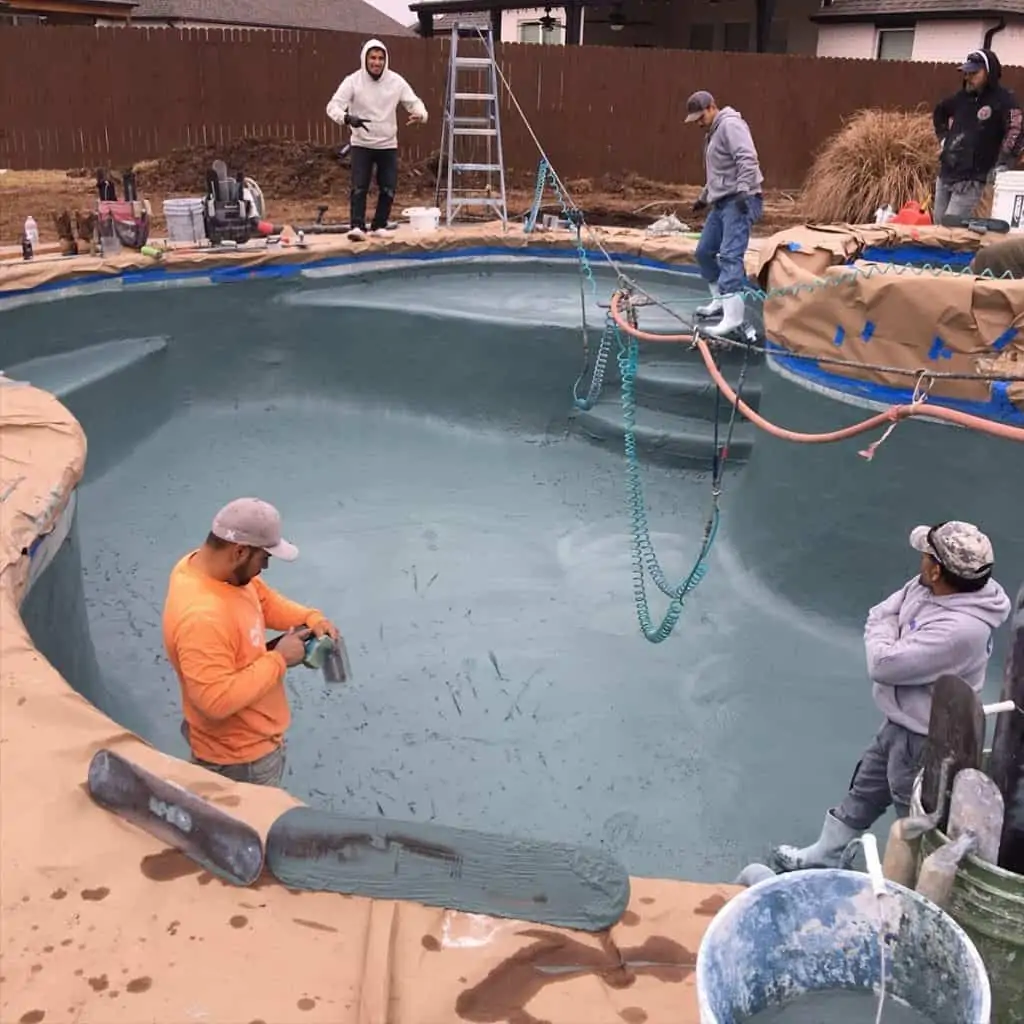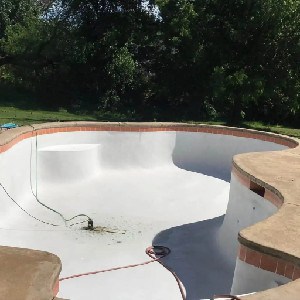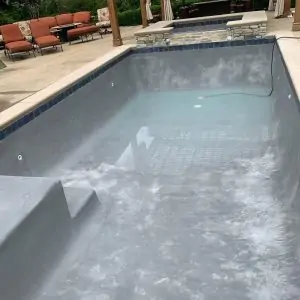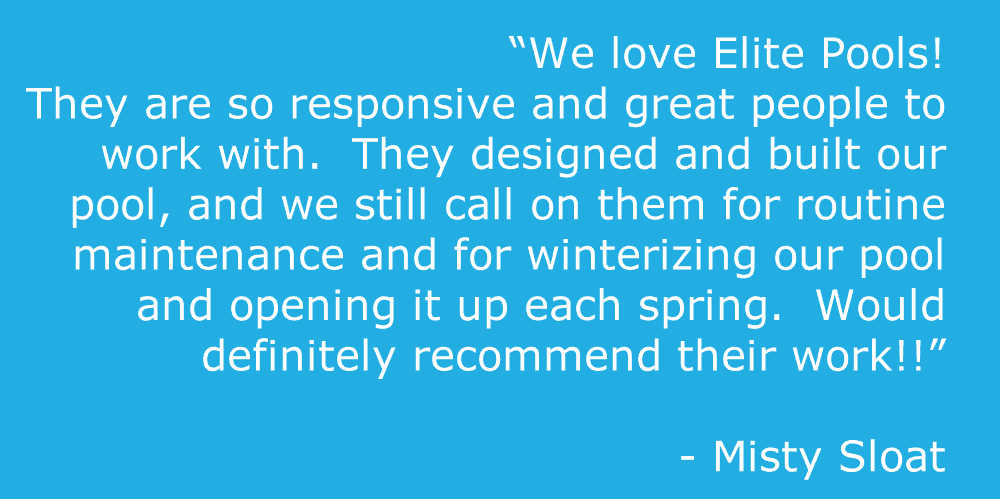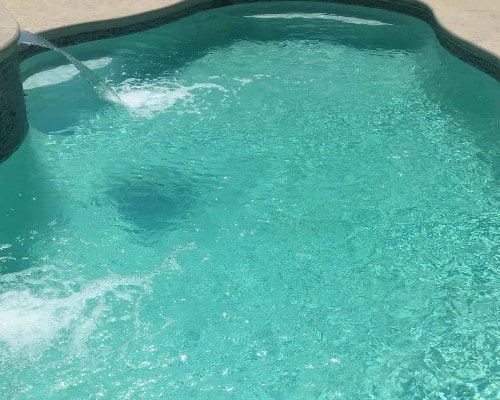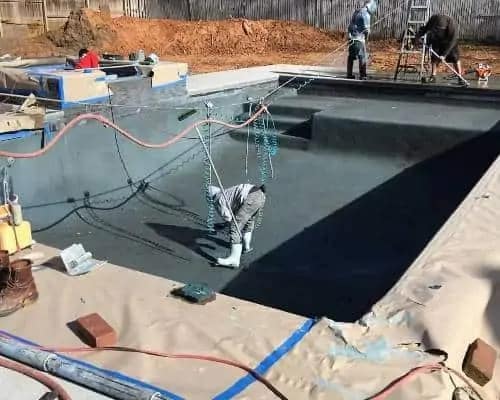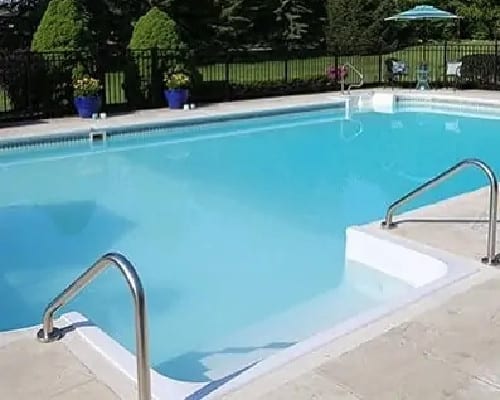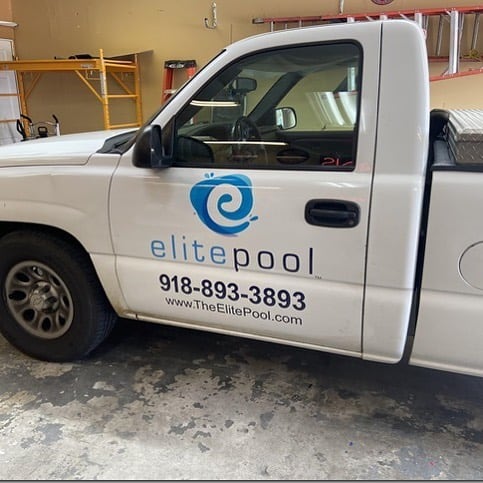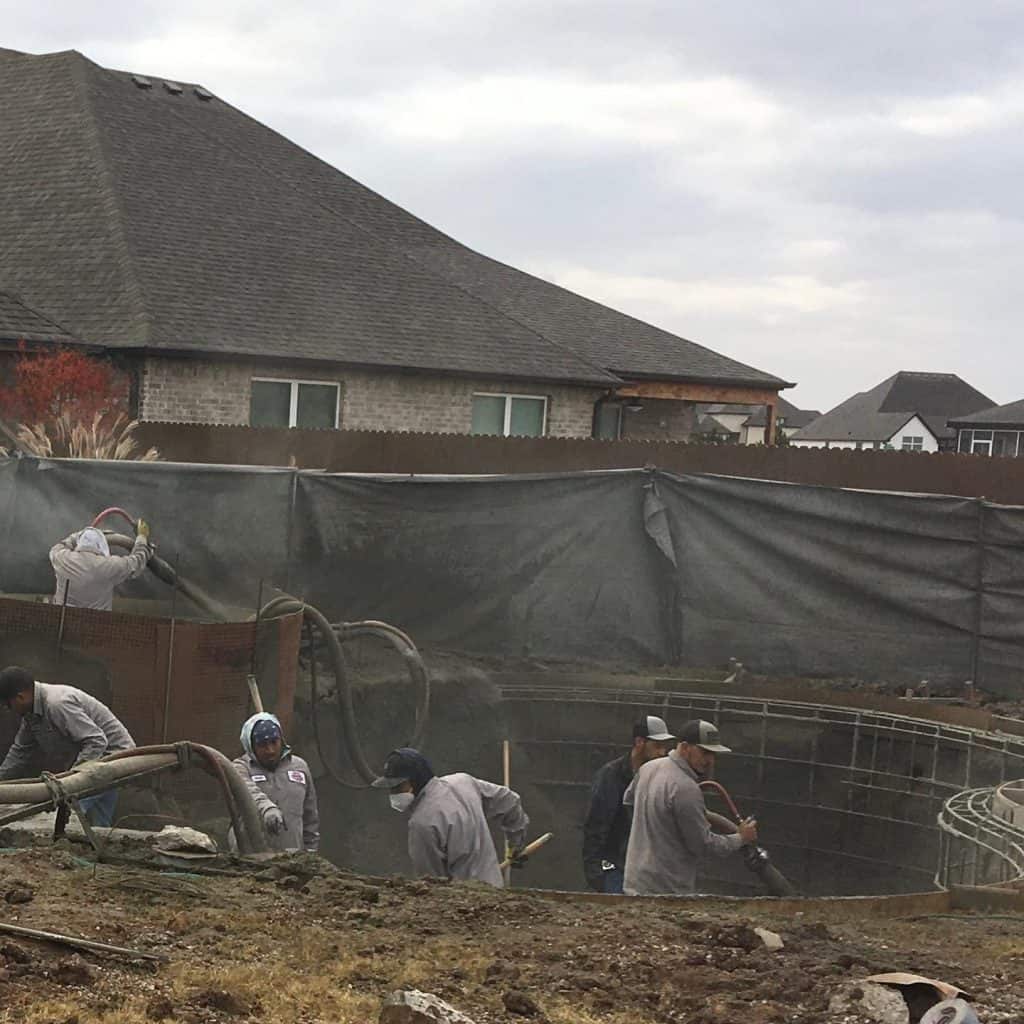Pool Plaster Repair Services - Swimming Pool Replastering
If you have a swimming pool, then you know that it needs regular maintenance in order to look and function its best. One of the most important aspects of pool maintenance is repairing any damage to the plaster coating. Pool plaster repair services can fix cracks and chips in the plaster, as well as other damages. By repairing your pool's plaster, you can help to extend its life and keep it looking beautiful.
Replastering is the process of adding a new layer of mortar over the entire interior surface of a concrete swimming pools that already has an existing layer of plaster. This is a maintenance item, and one of the more expensive and common ones that you will need to do if you own a concrete swimming pool.
On average every five to ten years you will need to replaster your swimming pool. Some pools can go up to twice this long between plasters with a high-quality plaster installation along with sustained, impeccable water chemistry and maintenance. The age itself is not what dictates when you need a new plaster job, but instead, the roughness of the finish is how you tell when it is time to replaster.
What is the Difference Between Resurfacing and Replastering a Pool?
Both pools resurfacing and pool replastering are common ways to improve the appearance and function of a swimming pool, but they have different benefits and drawbacks.
Pool resurfacing is the process of repairing and restoring the surface of a swimming pool. It is a less invasive process that can be completed relatively quickly.
Pool replastering is a more expensive and time-consuming process that results in a completely new surface. It is the process of completely removing the old plaster and replacing it with new plaster.
Ultimately, the choice between pool resurfacing and pool replastering depends on your budget and desired results. If you are looking for a quick and affordable fix, pool resurfacing is the way to go. But if you are looking for a best brand new look and don’t mind spending a little more money, pool replastering or pool plaster concrete is the better option.
Pool Plaster Basics
The basic concrete pool plaster recipe is a 1:2 ratio of white Portland cement mixed with some sort of silicates, such as ground limestone, quartz sand, or marble dust. Many pool plaster mixes also include other chemicals, such as liquid acrylic concrete structural fortifiers to affect their texture and durability.
Pigments can also be added to affect the color, which will in turn be affected by the water inside the pool. A pure bright-white pool plaster mix or white pool plaster is the most popular option historically but with fresh competition currently. It will provide brilliant cerulean color to the filled pool, while a gray tint will give the famous Tahoe blue look.
Pool plaster is mixed by hand on-site and then applied in a 1/4-inch to 1/2-inch-thick coat all along the bottom and sides of the pool (unless the homeowner desires a different waterline finish). It dries quickly, and generally, the pool can be filled and used the next day.
You can also save time from swimming pool repairing issues in your pool. Your time matters and the sooner your pool is fixed, the better. Having a plaster repair kit handy for pool care is also a big plus. If you're not capable of doing repair of your pool, you may want to consider hiring professionals for your concrete pool.
Ready to find out more?
Give us a call to find out how easy it is to get started on your backyard dream!
How Do You Know When to Replaster Your Pool?
Over time, your pool will go through natural wear and tear or crack which often leaves behind simple things that need to be fixed. As with anything, there is always some upkeep to do. After long enough though, you may start to see bigger issues coming up. These may be signs that you need to replaster your pool or your pool surface area.
Peeling or Chipping Plaster
The peeling away of plaster is also known as “spalling” in the pool industry. Spalling occurs on the floor and the steps of your pool. Low levels of pH or calcium can cause spalling.
If you’ve started to notice that the plaster in your pool is frequently damage, chipping, or peeling, this may be a sign that you need to replaster your pool. This happens when the concrete in your pool begins to erode or break away because of a series of improper chemical balancing. If this happens once, keep an eye on it. But, if it continues to happen, the best thing to do is to contact the professionals like The Elite Pool Services to come and take a look.
Stains
Being made with a soft surface, plaster pools or swimming pool plaster are also susceptible to stains over time. The cleaner you keep your concrete swimming pools, the longer it will avoid staining. But some staining is inevitable, especially if an improper chemical balance has been maintained in the pool for some time.
Stains and discoloration can be cleaned with an acid wash that removes the topmost layer of the plaster. This is an easy fix for freshening up the appearance of your pool with pool plaster repairs. For sure, concrete pool owners will l be happy with it.
Cracks
Temperature changes can result in cracks on your pool’s surface. They usually resemble a spider’s web or cracks in eggshells. Existing cracks can enlarge over time. Proper care can fix these cracks. Yet, there are situations where the only way to get rid of the cracks is to replaster the surface of your pool or to pool plaster cracks.
Roughness
As your plaster wears away, you may be able to see or feel the rough surface of the plaster. The pool plaster can become rough, sharp, or jagged and can even cause injury while swimming if left unrepaired. If patchy spots or cracks appear on the surface of your pool, start to consider whether pool replastering would be a smart option for you.
If you start to notice your pool feeling rougher and rougher, give us a call. We can help determine what it is.
Sudden Drop in Water Level
A sudden drop in water level is often an early sign of a pool problem. You might have a water leak in your hands. Plaster fatigue or bad fittings can cause leaks in your pool. Cracks in your pool can cause leaks that are not always easy to detect. Poor pool construction is often the reason why there are cracks in your pool’s surface.
This is why you should hire a swimming pool plaster professional for your home pool that knows what is needed to install a quality and long-lasting pool.
How long does pool plaster last?
Plaster is long-lasting. The secret to the long life of any pool surface is properly maintained water balance. Improper water balance will destroy any pool surface and in many cases, void the warranty of that surface. Depending on a variety of factors and how well you maintain your pool, your plaster can last from 7 to 10 years.
The average life expectancy of a plastered pool is affected by regular pool maintenance and cleaning. If you take excellent care of pool plaster, such as marcite plaster can last up to 7-10 years while you’ll get an additional five years on the life of your pool if you use quartz aggregate blend for pool plastering.
Happy Swimming Pool Owners - Reviews from Our Customers
"These folks are great to work with. Courteous, considerate, and very quick to respond to your needs. Very polite and respectful of your property. They put in a beautiful pool for our daughter's family and we stopped by frequently to see the progress. Based on my observation and seeing the final project, I would highly recommend this company for any pool needs you might have including designing, installation, and maintenance. Really good people with great ethics."
- Catrena Alford
5-Star Google Review
![]()
"Mark and Jenny do a great job of relaying what needs to be done to keep your pool in shape and following up and making sure it's being done right. They handle all sizes of jobs with professional and friendly service."
- Courtney Lewis
5-Star Google Review
![]()
How often do you need to replaster a Pool?
The short answer for this is every 10 years. However, it’s important to consider aside from those mentioned above. Factors such as:
- Aesthetic Reasons - Concrete Pool owners replaster their pool based on the look and feel.
- Structural Reasons - If there are several bare or thin spots, be sure to plaster the entire pool for a uniform result.
- Mineral Stains - Over time, certain minerals in water such as copper and iron may stain the plaster and ruin the overall view of your pool surface area.
- Gunite Showing - Several pools are constructed with concrete-like substances (gunite or shotcrete) that form the pool basin’s structural support. As such, if you see patches of darker material, then it’s time to replaster.
- Uncomfortable Swimming - When you swim and end up getting scratched when you get out of the pool, that’s one of the signs of your plaster wearing thin and your pool needs repairing.
How Soon Can You Swim After Replastering a Pool?
The plaster material cures underwater in about 7-10 days. and at least 30 days before the pool can be drained. With a freshly plastered pool, initial care is very important. The pool should be brushed 2 times a day for 10 days. But this doesn’t mean you have to wait that long. Once the pool is filled and clean, you can go in for a swim.
How much does it cost to plaster a Pool?
The cost of replastering a pool depends on a few variables:
- Size of pool
- Shape of pool
- Colors or finishes
The typical cost to have a patch pool plaster is between $4 and $7 per square foot. Assuming an average pool size of 16 feet by 32 feet, 4 feet deep on the shallow end and 8 feet on the deep end, that’s a total of 1,088 square feet. If the cost is $5 per square foot, replastering would cost $5,440. If you are unsure if replastering is called for, you should have a pool repair company The Elite Pool Services
Replacing old plaster from a Swimming Pool
Pool plaster not only enhances the aesthetics and design of your pool but also provides a protective covering that extends the life and enjoyment of your pool. However, with time, the plaster may begin to deteriorate and lose its tensile strength. This deterioration can result in corrosion, chipping, and cracks, reducing the structural strength and overall appearance of your pool thus, pool plaster repair is necessary.
Step 1: Selecting a Plastering Color
Clear and unambiguous communication is the foundation of any successful pool plastering operation. We work closely with each client to develop a project cost and timeline that outlines all of the work that needs to be done to replace pool plaster.
Step 2: Draining the Pool
The first stage in a professional pool plastering job is to completely drain the pool with our submersible pumps. This makes it possible to drain the water fast and effectively. Our professionals will arrive at your property and get to work once we’ve decided on a course of action for your pool plastering project.
Step 3: Relieving Hydrostatic Pressure
The removal of hydrostatic pressure from beneath your pool is an important aspect of the replastering process. This will prevent the pool from “popping up” during the plastering process.
Step 4: Plaster Prepping
After the hydrostatic pressure under the pool has been relieved, the pool must be prepared for plastering by undercutting all waterline tiles as well as any pool fixtures and features such as lighting, jets, returns, and the main drain. Undercutting allows us to start working in the plaster right away.
Take your acid brush and spread the acid wash over the old plaster, use a hose to rinse the acid wash off. Make sure you are thorough. Allow the pool to dry. Apply a bond coat. Let the bond coat dry. This will take anywhere from 8 to 10 hours.
Step 5: Prepare and Apply Plaster
The pool is now ready for the first layer of pool plaster to be applied. The pool plaster will be put over a scratch coat and will be 3/8 to 12 inches thick. The finish will be smooth troweled when the fresh plaster layer is put in. This plaster layer will fill in all of the hollows that we pounded out to give your replastered swimming pool a long-lasting gloss.
Then apply a second layer of plaster with the trowel that is about ¼ inch thick. Do a double-check to make sure that the surface is as smooth as possible. Let the finishing layer of plaster dry.
Step 6: Finishing Up
Once the plaster is completely dry, add a layer or two of pool paint. Then we allow the paint to dry completely again.
Step 7: Final Inspection
Our Pool Professionals will have their final inspection before filling your pool with water to confirm that the plastering has been properly applied. Prior to refilling, the Elite Pool Professionals will take care of any necessary fixes or upgrades. This method of measuring twice and cutting once eliminates the possibility of any problems or errors.
Step 8: Refill Pool
The next step is to replenish the pool plaster concrete with fresh water after the final examination of the pool plaster has been completed! However, before we refill the pool for summer pleasure, our crew will add sequestering chemicals to the water to prevent discoloration on the new plaster finish.
Pool Repair and Pool Plaster: How to Prevent Pool Stains
- Keep leaves and debris out of your pool
- Vacuum the dirt as often as necessary, and don’t let it sit on the floor for long periods
- Brush the plaster surface once a week
- Acid wash your pool every few years to refresh the plaster and keep the stains to a minimum
- Regularly test for metals in the water if you’ve had problems with metal staining in the past

Leave the work to our experts
Besides the process being difficult, time-consuming, and involving the use of a number of tools you’re likely not very familiar with, there are other reasons you might be better off reaching out to Elite Pool Service to replaster your pool. We want you to enjoy your pool with no limitations. We understand how fun it is plunging in your pool knowing that it is safe and free from accidents.
If you are in need of pool plaster repair services, be sure to contact a qualified professional. The Elite Pool Professionals have the experience and expertise necessary to do pool plaster repair properly. They will be able to assess the damage and recommend the best course of action for repairing it.
When it comes to a pool plastering schedule, our experts will walk you through what to expect during the earliest phases of consultation. To find out all that we have to offer with our routine cleanings, give us a call today! (918) 893-3893.
We Also Provide Pool Services for these Areas:
Bixby, Broken Arrow, Claremore, Coweta, Jenks, Owasso, Sand Springs, Sapulpa, and Tulsa.
Table of Contents
- Pool Renovation
- Pool Resurfacing
- Coping, Tiling, & Rock
- Lighting Upgrades
- Pool Automation
- Chlorine Alternatives
- Pool Pumps & Installation
- Hayward Platinum Warranty Center



